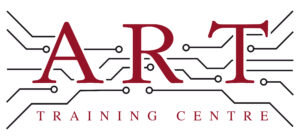Definition
Hand Soldering is a process used in electronics manufacturing where components are joined to a circuit board using a heated soldering iron. This method involves melting solder, a metal alloy, to create a permanent electrical connection between the component leads and the conductive pads on the printed circuit board (PCB). Hand soldering is essential for assembling and repairing electronic devices, ensuring reliable connections for proper functionality.
How It’s Used in the Industry
In electronics assembly, Hand Soldering is applied by first preparing the PCB and components. Technicians clean the surfaces to ensure good adhesion and then position the components on the board. Using a soldering iron, they heat the solder and apply it to the joint between the component lead and PCB pad. This creates a secure connection. Hand soldering is crucial for both through-hole and surface mount technologies, allowing for repairs and modifications. It matters for technicians in training to develop fine motor skills and for experienced professionals to maintain high-quality standards in assembly and rework processes.
History & Origins
Hand Soldering became common in electronics manufacturing in the mid-20th century, particularly during the rise of consumer electronics post-World War II. The process evolved with the development of standards such as IPC-A-610, which established guidelines for soldering quality. As technology advanced, hand soldering remained vital due to its flexibility in assembling intricate circuits and its role in early electronics, paving the way for modern manufacturing techniques.
Variations
There are several variations of Hand Soldering, including through-hole and surface mount soldering. Through-hole soldering involves inserting component leads through holes in the PCB, while surface mount soldering places components directly on the board’s surface. Each method requires different techniques and tools. Hand soldering differs from automated soldering processes, such as wave or reflow soldering, in that it allows for more precise control and is often used for small-scale production, repairs, or prototyping.
Modern Applications
Today, Hand Soldering is widely used in electronics production, repair, and professional training. It remains relevant for assembling both surface mount and through-hole components, especially in low-volume or high-precision applications. Hand soldering is critical for ensuring quality and reliability in electronic devices, as it allows technicians to inspect and correct potential faults. Compliance with IPC standards is essential, making hand soldering a key skill in the industry for maintaining high manufacturing and repair standards.
Practical Tips & Training
For effective Hand Soldering, ensure proper safety measures, such as wearing protective eyewear and working in a well-ventilated area. Use quality tools, including a good soldering iron, solder, and desoldering equipment. Inspect solder joints for quality, ensuring they are shiny and free from defects. Structured training and certification are vital for mastering hand soldering techniques, providing technicians with the skills necessary for high-quality electronics assembly and repair.


